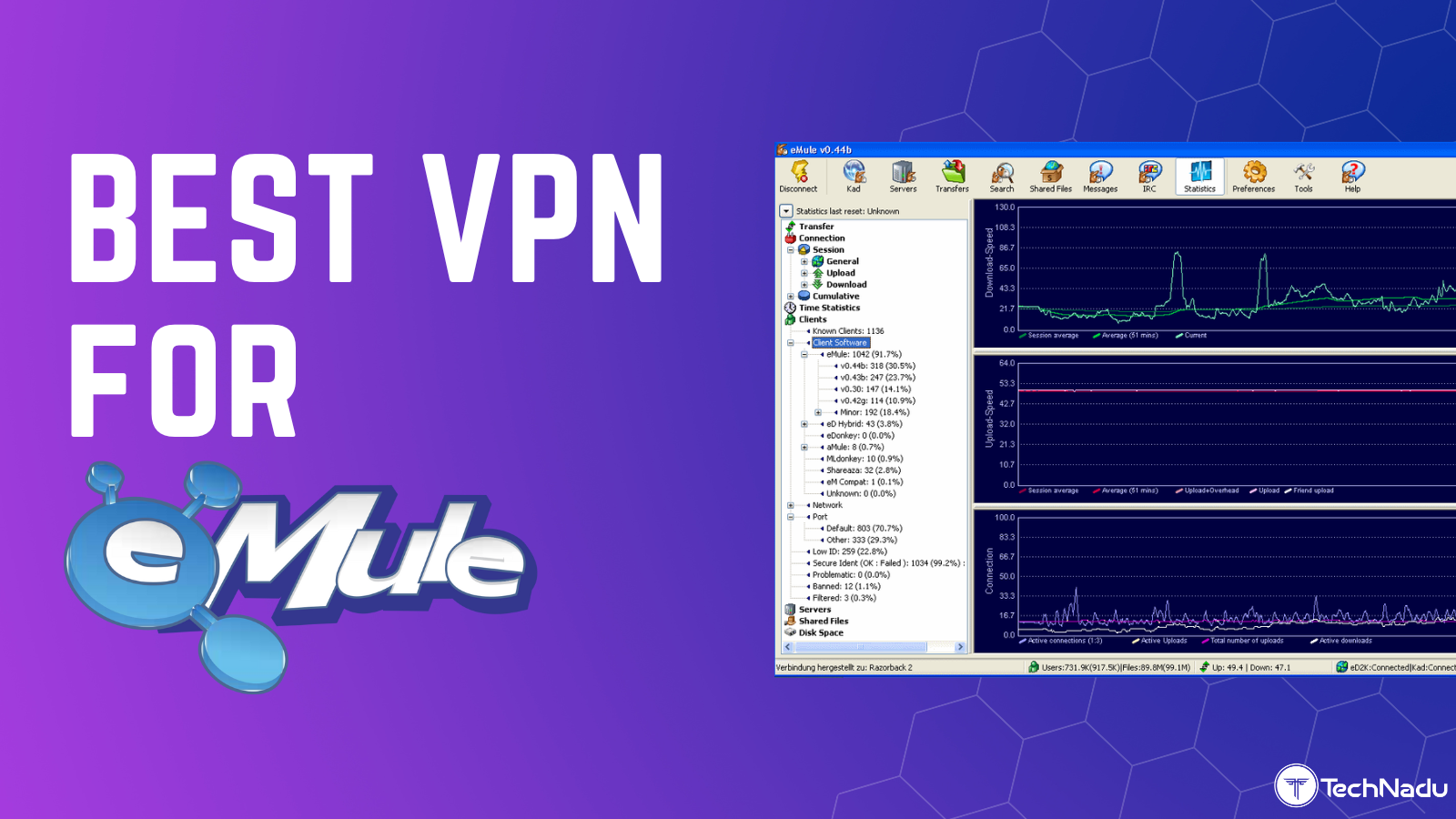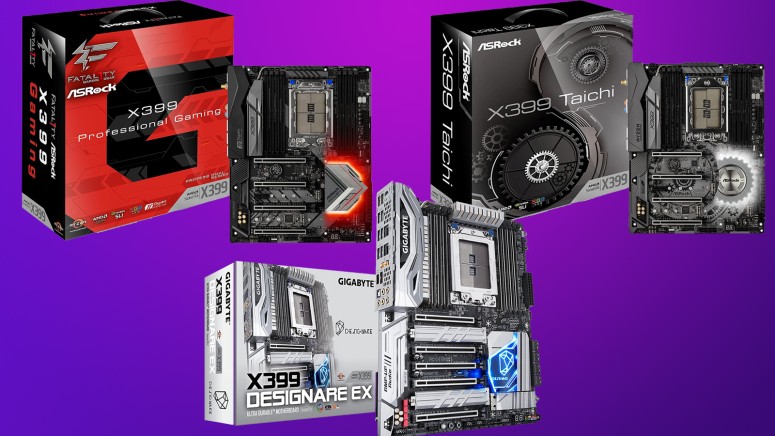
6 Best X399 Motherboards to Buy in 2025 for the AMD Threadripper TR4 Socket Platform
AMD’s Ryzen Threadripper CPUs have created quite a storm in the HEDT processor market and have brought high core count computing at relatively affordable prices compared to their Intel counterparts. Ryzen Threadripper is currently the best consumer platform for workstation computing and offers a range of core counts to choose from. Complimenting the Threadripper CPUs are the X399 motherboards, which are compatible with current and previous generation Threadripper platforms.
Investing in an X399 Threadripper setup is no easy affair. It requires careful planning of the requirements and the kind of workflows that will be run on the system. While looking at a good X399 motherboard, one should take into account adequate cooling requirements as well as the processor itself can require between 180-250W, and overclocking can push it even higher. Therefore, great attention has to be paid to the power delivery system of the board. Most other features, such as M.2 slots, expansion slots, SATA ports, USB ports, etc., are fairly standard across most models.
As such, here are some of the best X399 motherboards you can buy right now:
1. Asus ROG Zenith Extreme X399 HEDT Gaming
The Asus ROG Zenith Extreme is a perfect complement for the latest second-generation AMD Threadripper processors. Threadripper processors are all about the massive number of threads, high PCI Express lane counts, more ports, and enhanced connectivity. The ROG Zenith Extreme includes support for all these features and more.
Some of these include double M.2 NVMe SSDs, U.2 connectors, and eight memory DIMMs for a maximum of 256GB, which can go up to 3600MHz. The Zenith Extreme stands out with its networking features as well. The board features built-in 802.11ad Wi-Fi that is theoretically capable of speeds up to 4.6 Gbps, provided you have the right equipment. Apart from this, Asus also includes the ROG Aerion 10Gbit LAN card in the package.
When it comes to performance, the ROG Zenith Extreme is easily one of the best X399 motherboards in the market today. Everything from customization to fine-tuned overclocking is easily possible with this motherboard. The AMD Threadripper processor can support up to 64 PCI Express lanes, and the Zenith Extreme helps you make the best use of that bandwidth.
Performance in multi-threaded benchmarks is, needless to say, excellent, while single-threaded scores aren't bad either. You can also overclock your CPU for better single-core performance, but you should also provide great cooling to ensure trouble-free operation. The BIOS is also neatly laid out for both newbies and seasoned tweakers.
Pros
- Four PCI-Express x16 slots, with support for SLI
- 10Gbit Ethernet port
- Plenty of USB ports on the rear I/O
- Heat sinks on the majority of the PCB
- Comes with Wi-Fi and Bluetooth modules
- Great overclocking possibilities
Cons
- Some of the features are not very useful for gaming
2. Gigabyte X399 Designare EX
The Gigabyte X399 Designare EX stays true to its name and is indeed one of the best-designed X399 boards on the market. The board features everything one expects from a top-class X399 motherboard and comes with adequate port selection and judicious use of all the space. Like many other Threadripper boards, you get two GbE NICs and wireless AC onboard along with USB 3.1 Type-A and Type-C connectors.
On the board itself, one finds a host of RGB headers, debug LED, Power/Reset/CMOS buttons, USB headers, fan connectors, and a USB 3.1 Gen2 front panel header, among others. The Designare EX supports both ECC and non-ECC RAm, so you can use any memory module you like - although it is a known fact that Threadrippers works best with the fastest RAM on the market.
Given the features and aesthetics, the Designare EX is targeted more towards professional users than gamers. That is not to say that gamers will not be benefited from this board. However, investing in Threadripper exclusively for gaming is not an ideal value proposition. Audio quality is good, and the gold-plated audio jacks ensure a minimal signal loss.
Users might feel the lack of onboard 10Gbit LAN a bit concerning, but since it is not a very ubiquitous standard yet, it really isn't a negative aspect. Plus, you can always pop in a 10Gbit expansion card whenever needed.
Pros
- Five PCI-Express x16 slots
- Three M.2 slots
- Onboard Wi-Fi connectivity
- State-of-the-art VRM power delivery and cooling
- Heat sinks for every M.2 drive
- Onboard buttons for CMOS clear and power/reset
Cons
- Both Ethernet ports are limited to 1Gbit
3. Asrock X399 Phantom Gaming 6
The Phantom Gaming 6 from Asrock is yet another motherboard that targets gamers, which means that it features a weird combination of workstation and gaming rig features. As such, you get a grand total of eight RAM DIMMs instead of the usual four, not to mention the fact that you also get to enjoy quad-channel memory support - a staple of the Threadripper series.
However, those eight DIMMs are limited to 3400MHz in terms of maximum frequency, which is a bit underwhelming nowadays. With that being said, buying quad-channel memory is already a very costly endeavor, which means that even 3400MHz kits are very rare. There's also the fact that 2nd generation Threadripper CPUs don't play well with high-frequency RAM anyway.
In terms of PCI-Express, you get three x16 slots, each of which is reinforced to support the weight of a top-shelf GPU. The point here is that you get a lot of PCI lanes, however, since most regular gaming motherboards are usually limited in this regard.
There are also three M.2 slots to play with, although only one of them features a heat sink to help with cooling. If that's not enough to satisfy your storage needs, there are also eight SATA three ports you can use to connect your run-of-the-mill drives.
Lastly, there are not a whole lot of extras on the rear I/O, which can be a bit of a bummer. The addition of a 2.5Gbit Ethernet port is definitely nice to see, but other boards go the extra mile and provide you with a 10Gbit port, which is far more useful under the circumstances. There is also no Wi-Fi or Bluetooth to speak of, so keep that in mind.
Pros
- Triple M.2 and PCI-Express x16 slots
- 2.5Gbit Ethernet port
- Decent USB connectivity
- A bit of RGB lightning for gamers
- Lots of fan headers
- Great VRM and power delivery
Cons
- No Wi-Fi module
- No additional PCI slots
4. Asrock X399 Taichi
The Asrock X399 Taichi offers excellent performance for the AMD Threadripper lineup. Unlike most boards, it comes with a subdued black and grey aesthetic, which might appeal to many. The X399 Taichi sports the gear-shaped heatsink design that is characteristic of this series. The neutral colors are useful in ensuring that any combination of RGB lighting will instantly compliment the board.
The rear I/O is standard for the most part. Asrock has equipped the board with its pure sound audio that is EMI shielded to prevent any interference. Asrock offers two U.2 ports for NVMe SSDs. You can also use M.2, but that would mean one of the three ports gets disabled. Unlike many other boards, Asrock does not offer any heat spreaders for the M.2 slots. There are four PCI Express slots configured in x16, x8, x16, and x8 modes.
The best part about the Asrock X399 Taichi is that its VRM is top-notch compared to many other boards - not only in this segment but also across platforms. Performance-wise, you won't be having any issues with this board, and overclockers will find plenty of settings to fiddle with. Using higher RAM frequencies will help you get even better performance.
Another highly useful feature is the availability of Power, Reset, and Clear CMOS buttons directly on the board. This makes it easy to fall back in case of any erroneous setting that has resulted in an unstable system.
While the Asrock X399 Taichi is one of the best sTR4 motherboards around, it has a few downsides. For one, the onboard wireless is only a 1x1 433 Mbps controller, while other brands offer a 2x2 867 Mbps controller for higher throughput. Also, there is a lack of M.2 heatsinks, and the inbox contents are pretty standard disappointing those looking for more goodies.
Pros
- Four PCI-Express x16 slots
- Support for decent RAM speeds
- Standard ATX form-factor
- Includes a Wi-Fi module and antennae
- Plenty of USB ports
- Onboard power and reset buttons
Cons
- No heat sinks for any of the three M.2 slots
- Ethernet ports limited to 1Gbit
5. Asrock Fatal1ty X399 Professional Gaming
The Asrock X399 Professional Gaming is another one of Asrock's offerings for the AMD X399 platform. It features most aspects of the X399 Taichi and adds a few gamer-centric features. Despite being targeted at gamers, the design isn't too flashy, and the RGB lighting effects are limited to the heatsink. Of course, you do get plenty of headers for adding RGB LED strips. The X399 Professional Gaming offers excellent connectivity options and a good array of networking features.
You get a wireless AC plus Bluetooth module, two Intel 211AT Gigabit NICs, and an Aquantia 10Gbit Ethernet. Whether a 10Gb Ethernet is really required for a gaming motherboard or not is up for debate, but you do have the option if you are on the lookout for one. The onboard Realtek ALC1220 audio chip supports the Creative Sound Blaster Cinema 3 codec, and the audio channels are shielded from any kind of electromagnetic interference.
The Asrock X399 Professional Gaming will satisfy the most demanding gamers' needs - be it those who run multi-GPU systems or those who like to customize their system to no end. The headers are placed on the bottom side, allowing for easy access.
The VRMs do a good job of ensuring a clean power supply to the processor and allow for good overclocking potential. Overall performance in both content creation and gaming is excellent. You will not find much difference between the X399 Taichi and this one, and you can actually go for the Taichi if you'd like to save some money and don't need the 10Gbit NIC. In fact, you will lose out on the internal USB 3.1 Type-C header due to the 10Gbit NIC for lack of enough PCI Express lanes.
Pros
- Two 1Gbit Ethernet ports and a 10Gbit port
- Four PCI-Express x16 slots
- Three M2 slots
- Wireless LAN connectivity
- Dedicated BIOS flashback button
- Great cooling for the VRM
Cons
- No heat sinks for the M.2 slots
6. Asus ROG Strix X399-E Gaming
The Asus ROG Strix X99-E gaming is a less-expensive alternative to the ROG Zenith Extreme and features support for AMD's latest Threadripper CPUs and most features found in other X399 motherboards. The board is targeted at gamers, but there aren't too many flashy RGB lights.
You still get enough headers for adding your own lights, though. The POST code indicator's placement is not the ideal location as it can get obscured when you install any expansion cards or have a bunch of cables running over it. The heatsink design both on the chipset and the VRMs is good and will allow for more efficient cooling. Some of the features usually found in more expensive X399 boards, such as gold-plated audio jacks, built-in I/O shield, etc., are not present in the ROG Strix X399-E.
While the ROG Strix X399-E does not have some of the exclusive features of other boards in this list, it features robust overclocking and a very intuitive BIOS. Even if you push the SoC voltage to 1.2V and the CPU voltage to 1.425V, the system will be relatively stable, and you should be able to hit 4GHz on all cores on Threadripper 1920X.
The ROG Strix does compromise on storage, which means you only get a single M.2 slot and six SATA 3 ports. Performance in real-world and synthetic benchmarks is excellent, so Asus has you covered in that aspect.
Pros
- Four PCI-Express x16 slots
- Plenty of fan and RGB lighting headers
- Wi-Fi and Bluetooth modules
- Dedicated BIOS flashback button
- Eight-channel HD audio
- Proper VRM cooling
Cons
- A single 1Gbit Ethernet port
- Only one M.2 slot and six SATA ports













